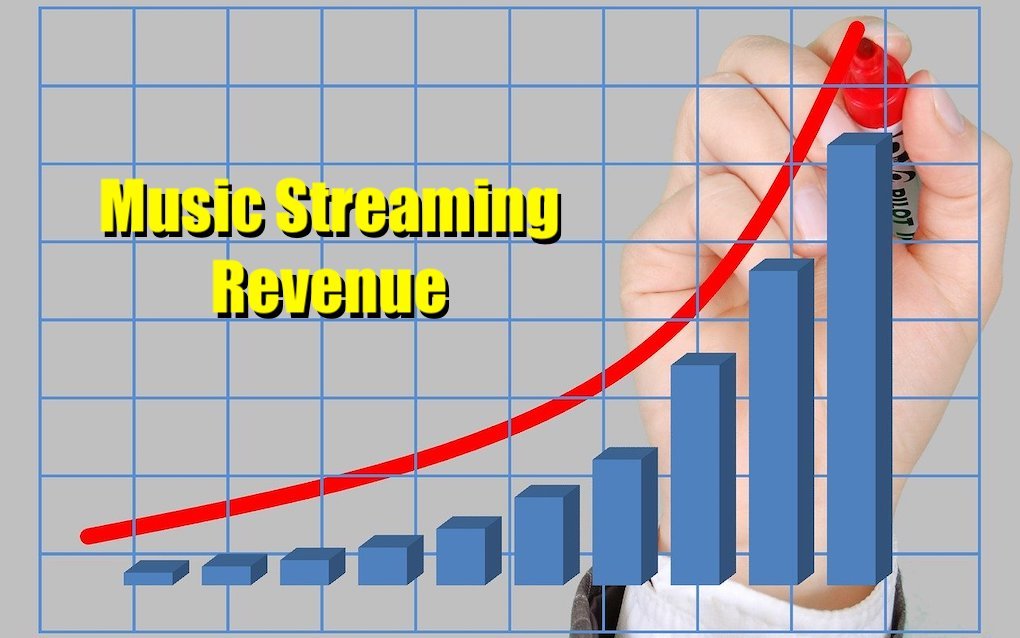If You Think Music Streaming Is The Devil, Think Again

It seems like a week doesn’t go by without someone from the “old music business” complaining about how small the royalty checks are these days and blaming it all on music streaming. Never mind that the music business paradigm was way different 20 to 50 years ago. Never mind that the music person making noise doesn’t believe in aging out. Never mind that the person has no idea how the music streaming business works today. Never mind that their opinions are based on misinterpreted or inaccurate data. To them, it was better back then and it’s pretty crappy now.
The False Premise
I think the biggest blind spot in this argument is that just because you had some success and consistent revenue way back when, that it would be the same today even if the business was still based on physical product sales and had not moved into digital. Tastes change and the ones who consume music most have always been in the 12 to 30 year old range. After that, life gets in the way, and no matter how much you may love music, you just don’t have the same time and energy to listen. That means that the music veteran who’s seen his or her income fall falsely blames streaming when it was going to diminish anyway regardless of the consumption model.
To illustrate, I have a friend who’s written several hits for a legendary 60s-70s rock star who recently complained about the fact that the labels are no longer putting out greatest hits albums. Every couple of years in the past one label or another would find a new way to repackage the same songs and sell it once again to more or less the same fans. My friend received a nice royalty check whenever that happened. No more, as you can only sell the same product so many times to the same people (or are consuming less as they get older as well. Not only that, physical product sales continue to fall, the album holds less importance than ever before, and today’s listeners care more about playlists anyway.
“But Streaming Will Never Make Up For Physical Product”
Then there’s the conversation I can remember having with two rather successful publishers about 5 years ago revolving around their belief that streaming could never make up for revenue lost from the eventual demise of physical product. The peak year for industry revenue for recorded music in the US was in 1999 with $14.6 billion according to the RIAA. Guess what? The music business is back to being healthy at $11.1 billion last year, and according the latest Goldman Sachs report, it’s going reach that 1999 peak revenue in 2026 and blast right past it after that, all thanks to streaming music. Keep in mind that the industry hit lows of $6.7 billion in 2014 and 2015 (about when I was having the conversation with the publishers) before streaming music became widely adopted. Who would want to return to those days?
It seems that no one remembers the reason behind the downfall of the CD in the years after 1999. Yes, the MP3 format was more portable and convenient, but the main reason was that consumers felt ripped off because they were paying a premium price for a round plastic disc that might only contain a couple of songs (if that) that they wanted. Had nothing changed in the business technology-wise, revenue was going to fall anyway as consumers would demand more for less money, and the labels would’ve had to start lowering their margins just to try to maintain the status quo. That revenue was coming down either way.
“But The Streaming Rate Is So Low”
I think that the argument that drives me the most crazy is about the per stream rate. There are figures thrown around always attempting to illustrate how artists and songwriters are being ripped off. “Well, Spotify is only paying $0.003 per stream,” comes the reasoning. Yes, but don’t you understand that these figures are always estimates? The actual per stream rate is different for every artist and label because of a variety of factors, like from which tier did most of those streams come from, the premium (pays more) or the free tier (pays less). And if they’re mostly coming from the free tier, that’s all based on ad revenue, which depends on the type of advertiser, how much they’re spending, and the time of year. And which revenue stream are we talking about anyway? Is it the copyright, streaming mechanical or publishing performance stream? And by the way, did you realize that the amount you actually receive comes down to the deal you have with your label and publisher, since they’re going to take the bulk of the revenue that was generated?
The fact of the matter is you don’t hear any artists who are actually on the charts these days complaining about streaming revenue. They’re doing just fine and are actually making more money all the time since the revenue pool is getting larger as more paying subscribers come on board. Spotify’s Q2 shareholder letter stated, “Gone are the days of Top 40, it’s now the Top 43,000,” referring to the number of “top tier” artists who receive about 10% of the service’s total streams. That figure was 30,000 just one year ago, according to the company.
The point is that, just like in politics, you have some people who’ve been in the industry for a long time that have a somewhat high profile, and they’re not happy that time and technology have moved on without them. The business might have been theirs in the past, but that’s no longer the case.
[Image by Tumisu from Pixabay]
